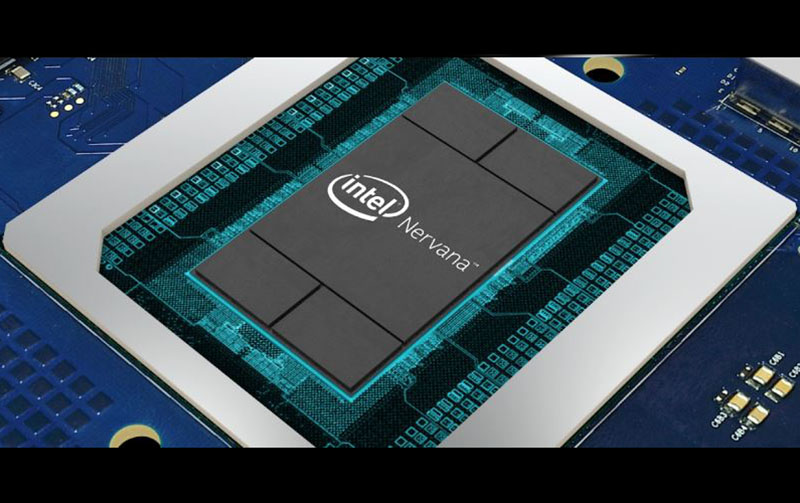The Edge Revolution: How On-Device AI is Reshaping Our Gadgets
We live in an era increasingly populated by intelligent companions. From the smart speakers that manage our schedules to the fitness trackers that monitor our health, artificial intelligence has become a seamless part of our daily routines. For years, the “intelligence” in these devices was a bit of a misnomer; most of them were simply conduits to powerful AI brains humming away in distant data centers. This cloud-centric model, while effective, came with inherent trade-offs in latency, privacy, and reliability. Now, a profound architectural shift is underway. A new wave of hardware innovation is pushing AI processing out of the cloud and directly onto the devices themselves. This move to “endpoint” or “edge” AI is not just an incremental update; it’s a revolutionary step that is redefining what our AI companion devices can do, paving the way for a future of truly autonomous, responsive, and secure technology.
The Architectural Shift: From Cloud Dependency to Endpoint Intelligence
To appreciate the significance of on-device AI, it’s essential to understand the model it’s replacing. The journey from a centralized cloud brain to distributed endpoint intelligence marks a pivotal moment in the evolution of consumer technology and the Internet of Things (IoT).
The Traditional Cloud-Based AI Model
For the better part of a decade, the standard approach for AI-powered gadgets followed a simple formula: capture, transmit, process, return. Consider a first-generation smart security camera. When it detected motion, it would capture a video stream and upload it to a cloud server. There, powerful servers running complex computer vision algorithms would analyze the footage to determine if the motion was caused by a person, a pet, or just rustling leaves. The result of this analysis would then be sent back to your phone as a notification. This model enabled incredible capabilities on low-cost hardware, but its limitations have become increasingly apparent:
- Latency: The round-trip journey to the cloud and back takes time. This delay can be the difference between a timely alert and a missed event, a critical factor in everything from AI Security Gadgets News to real-time feedback in AI in Sports Gadgets News.
- Privacy Concerns: Sending personal data—be it voice recordings, video feeds, or biometric information—to a third-party server creates significant privacy risks. Data breaches and concerns over data usage have made consumers wary of this constant data transmission.
- Connectivity Dependence: If the internet connection is slow or goes down, the device’s “smart” features become useless. A smart speaker can’t even set a timer, and a security camera stops its intelligent analysis.
- Operational Cost: Constantly streaming data and paying for cloud computing resources can be expensive for both manufacturers and consumers, often leading to mandatory subscription models for advanced features.
The Emergence of Endpoint AI
Endpoint AI flips this model on its head. Instead of outsourcing the thinking, the processing happens directly on the device. This is made possible by a new class of highly efficient, low-power microprocessors and microcontrollers (MCUs) that feature dedicated hardware for accelerating machine learning (ML) workloads. These are the unsung heroes behind the latest AI Edge Devices News.
By integrating specialized Neural Processing Units (NPUs) or ML accelerators, these chips can run sophisticated AI models that were once the exclusive domain of data centers. The benefits are a direct solution to the drawbacks of the cloud:
- Ultra-Low Latency: With processing happening locally, response times are measured in milliseconds, enabling real-time interactions and immediate feedback.
- Enhanced Privacy and Security: Sensitive data, like the video from your living room or data from Health & BioAI Gadgets News, can be processed and analyzed without ever leaving the device, drastically improving user privacy.
- Improved Reliability: Core functions can operate perfectly without an internet connection, making devices more robust and dependable.
- Reduced Costs: Minimizing data transmission lowers bandwidth costs and reduces reliance on expensive cloud infrastructure.
Under the Hood: The Technology Powering On-Device AI

The transition to endpoint AI isn’t just a software trend; it’s fundamentally a hardware revolution. The ability to cram significant computational power into a tiny, battery-sipping chip is the core enabler. This involves a move away from general-purpose processors to highly specialized silicon designed specifically for the mathematics of modern AI.
The Evolution from CPU to NPU
A standard Central Processing Unit (CPU) is a jack-of-all-trades, designed to handle a wide variety of tasks sequentially. While it can run AI models, it’s incredibly inefficient at it, consuming too much power and time. The next step was using Digital Signal Processors (DSPs), which are better at parallel mathematical operations. However, the real breakthrough has come from the development of dedicated Neural Processing Units (NPUs), also known as ML accelerators.
An NPU is an application-specific integrated circuit (ASIC) built for one primary purpose: to execute the core operations of a neural network, such as matrix multiplications and convolutions, with maximum speed and minimal power consumption. Modern architectures for AI Sensors & IoT News often pair a power-efficient microcontroller core (like those based on the Arm Cortex-M series) with a scalable microNPU. This combination allows the device to handle general housekeeping tasks with the MCU while offloading all the heavy AI lifting to the specialized NPU.
Key Architectural Innovations
Several key innovations are making these powerful yet efficient chips a reality:
- Dedicated ML Acceleration: By designing hardware specifically for neural network operations, manufacturers can achieve performance gains of 10x, 50x, or even more compared to running the same model on a general-purpose MCU. This is the magic that allows a tiny wearable to perform complex pattern recognition.
- Extreme Power Efficiency: Endpoint devices, especially those covered in Wearables News and AI Sleep / Wellness Gadgets News, are often battery-powered. These new processors use advanced techniques like aggressive clock gating (shutting down parts of the chip when not in use) and specialized, low-power memory to perform complex calculations using mere milliwatts of power.
- Scalable and Flexible Design: The architecture is not one-size-fits-all. It’s designed to be scalable. A simple keyword-spotting device for AI Audio / Speakers News might use a small NPU, while a sophisticated system for AI-enabled Cameras & Vision News in an autonomous vehicle might use a much larger, more powerful version of the same core architecture. This flexibility allows developers to choose the right balance of performance and cost for their specific application.
Real-World Impact: A New Generation of AI Companion Devices
This technological leap is already creating a new class of smarter, more responsive, and more personal AI devices across a vast array of categories. The impact is being felt everywhere, from our homes to our bodies.
Smart Home, Appliances, and Security
In the smart home, on-device AI is enabling a new level of intelligence and privacy. The latest Smart Home AI News is dominated by this trend. An AI Security Gadget like a smart doorbell can now perform person, package, and vehicle detection directly on the device. This means you get an instant, intelligent alert (“Person detected at front door”) without your video feed ever being sent to a server. Similarly, AI Kitchen Gadgets can use on-device vision to identify ingredients and suggest recipes, and next-generation Robotics Vacuum News highlights cleaners that can identify and avoid specific obstacles like shoes or pet waste in real-time, making them far more effective.
Health, Wellness, and Wearables

For personal health, the privacy and immediacy of endpoint AI are paramount. An AI Fitness Device or a sophisticated wearable can continuously analyze ECG and heart rate data on-device to detect signs of atrial fibrillation or other anomalies, providing potentially life-saving alerts in real-time. This local processing ensures that highly sensitive personal health information remains secure. This trend is also influencing AI in Fashion / Wearable Tech News, where smart fabrics could one day analyze posture or gait locally.
Robotics, Drones, and Autonomous Vehicles
In robotics and autonomous systems, low latency is a non-negotiable requirement. An AI Personal Robot navigating a home or a drone performing an inspection cannot afford to wait for instructions from the cloud. The latest Drones & AI News showcases models with on-board object recognition and collision avoidance, powered by edge processors. This same principle is fundamental to Autonomous Vehicles News, where every millisecond counts for perception and decision-making systems that must process vast amounts of sensor data locally.
Voice, Audio, and Entertainment
Even our interaction with voice assistants is changing. The latest AI Assistants News focuses on hybrid models where simple, common commands (“turn on the lights,” “what time is it?”) are processed locally for instant response. This makes the assistant feel more natural and allows it to function even when offline. In the world of AI Toys & Entertainment Gadgets News, on-device AI can create more interactive and responsive characters that adapt to a child’s play style without needing a constant connection.
The Developer’s Perspective: Best Practices and Challenges
For developers and engineers, the move to endpoint AI presents both exciting opportunities and significant challenges. It requires a new way of thinking about building and deploying machine learning models, shifting the focus from massive, resource-hungry cloud models to lean, efficient on-device alternatives.

Opportunities and Best Practices
Harnessing the power of endpoint AI requires a focus on optimization. Developers must use a suite of techniques to shrink powerful AI models to fit within the tight memory and power constraints of an MCU:
- Model Optimization: Techniques like quantization (reducing the precision of the numbers in a model, e.g., from 32-bit floats to 8-bit integers) and pruning (removing unnecessary connections within the neural network) are essential for reducing model size and computational load without a significant loss in accuracy.
- Efficient Architectures: Using lightweight model architectures designed for mobile and edge devices, such as MobileNet or TinyML models, is a critical starting point.
- Leveraging Toolchains: The ecosystem of AI Tools for Creators News is rapidly maturing. Toolchains like TensorFlow Lite for Microcontrollers, PyTorch Mobile, and proprietary SDKs from chip manufacturers are crucial for converting, optimizing, and deploying models onto the target hardware.
Common Pitfalls and Considerations
The path to deploying on-device AI is not without its hurdles:
- The Memory Constraint: On-chip memory (SRAM) is extremely limited and fast, while off-chip memory (Flash) is larger but slower. Developers must carefully manage where the model weights and intermediate activations are stored to avoid performance bottlenecks.
- The Accuracy-Performance Trade-off: There is a constant tension between a model’s accuracy, its inference speed, and its power consumption. A highly accurate model might be too large or slow for the target device, forcing developers to find the optimal balance for their specific use case.
- On-Device Security: While endpoint AI solves data-in-transit privacy issues, it makes the device itself a target. Securing the device firmware, protecting the ML model from extraction or tampering, and ensuring secure boot processes are critical considerations.
Conclusion: A Smarter, More Personal Future
The proliferation of powerful, efficient endpoint AI hardware marks an inflection point for the entire consumer technology landscape. We are moving away from an ecosystem of connected terminals towards a world of truly intelligent, autonomous devices. This shift, driven by remarkable innovations in silicon design, delivers a trifecta of benefits: superior responsiveness, fortified privacy, and unwavering reliability. For consumers, this means AI companions that are faster, more helpful, and more trustworthy. For developers, it opens up a new frontier for creating applications that were previously impossible. From AI for Accessibility Devices that can react instantly to a user’s needs to Smart City / Infrastructure AI Gadgets that manage resources locally, the future of AI is not in a distant cloud, but all around us, running silently and efficiently at the edge.








